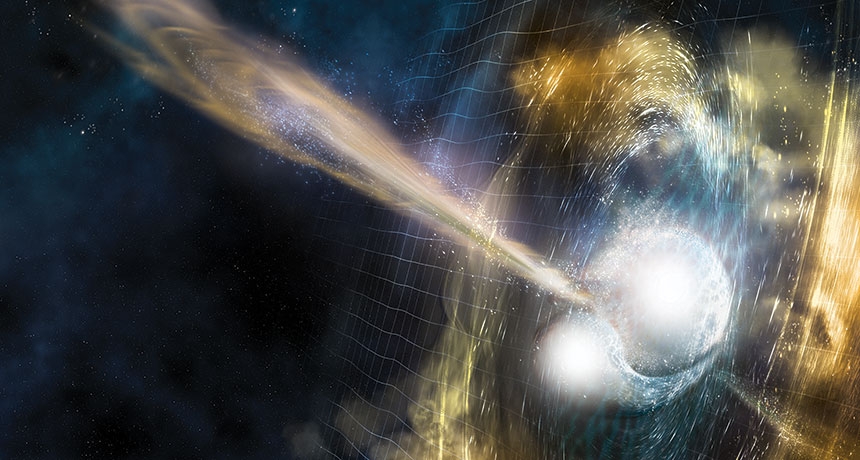This year’s neutron star collision unlocks cosmic mysteries

NSF, LIGO, SONOMA STATE UNIV., A. SIMONNET
CRASH AND WAVE In a galaxy 130 million light-years away, two neutron stars collided. This year, in the first detection of its kind, observatories caught the resulting gravitational waves and light show (illustrated).
Discovery offers clues to heavy element formation, universe’s expansion and more
BY EMILY CONOVER 8:31AM, DECEMBER 13, 2017
Thousands of astronomers and physicists. Hundreds of hours of telescope observations. Dozens of scientific papers. Two dead stars uniting into one.
In 2017, scientists went all in on a never-before-seen astronomical event of astounding proportions: a head-on collision between two neutron stars, the ultradense remnants of exploded stars.
The smashup sent shivers of gravitational waves through Earth, and the light show that followed sent shivers of excitement down astronomers’ spines. A real-life scientific drama quickly unfolded as night after night, astronomers around the world raced the sunrise, capturing every possible bit of data before day broke at their observatories.
See full text